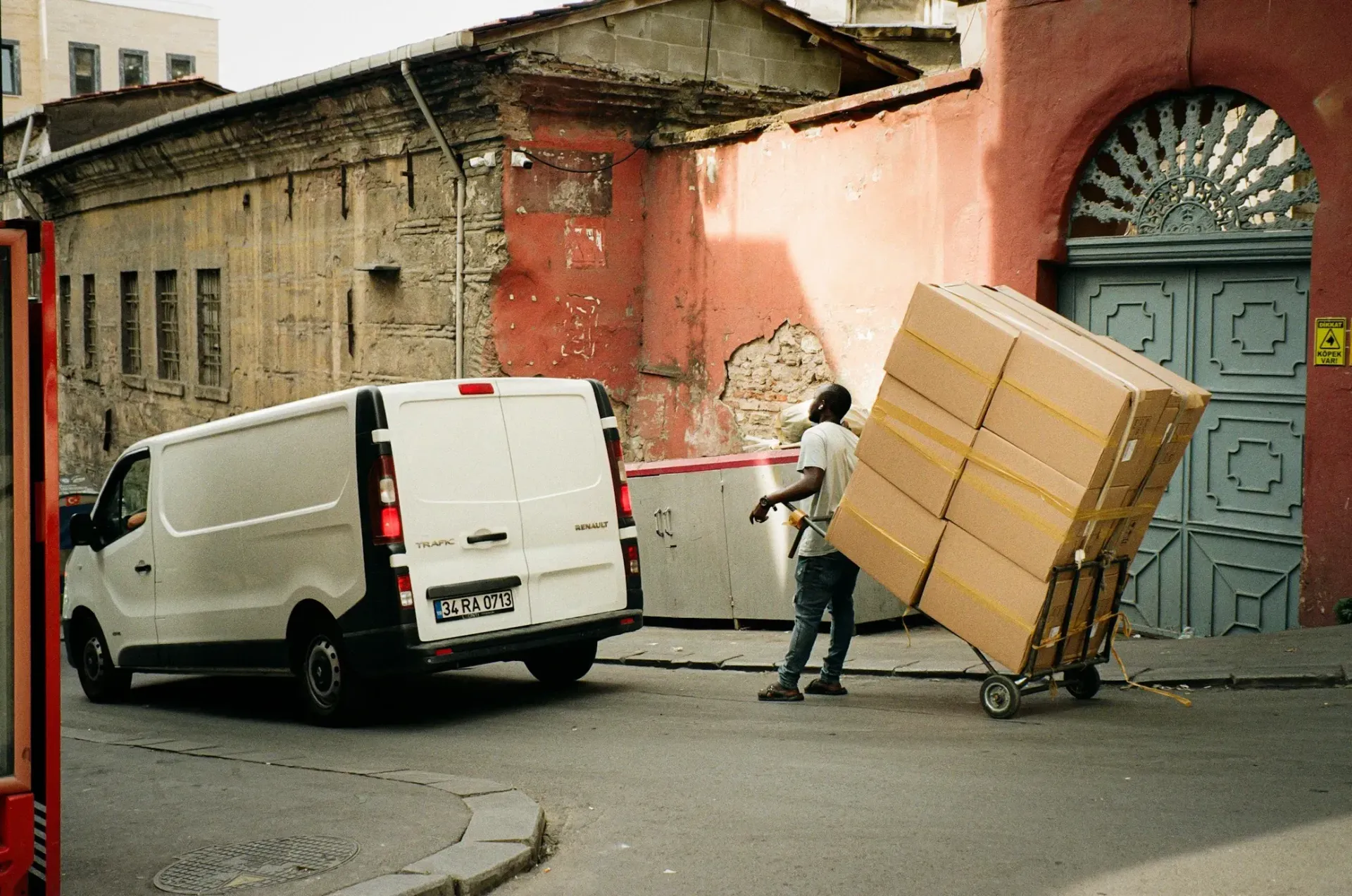How to Make a Moving Binder for an Organized Move

How to Make a Moving Binder for a Smooth Move
Moving can be a lot, but being organized helps.
A moving binder keeps all your important stuff in one spot—documents, receipts, checklists.
It’s your go-to guide for the move. Here’s how to make one for a smoother process.
What is a Moving Binder?
A moving binder is your ultimate organization tool. It’s a simple binder where you keep all the important papers and plans for your move. Think of it as your moving command center. With everything in one place, you won’t lose track of vital details.
Benefits of a Moving Binder
- All in One Place: No more hunting for papers.
- Stress Reducer: Helps you stay on top of things.
- Quick Access: Everything you need is easy to find.
Having a moving binder can make the whole process feel less overwhelming. It’s a straightforward way to stay organized and keep everything running smoothly.
Materials Needed for Your Moving Binder
To start, gather these essential supplies:
- Binder: Choose a sturdy binder, preferably with a 2-inch spine.
- Dividers: Use dividers to separate different sections.
- Plastic Sleeves: Protect important documents with plastic sleeves.
- Notebook Paper: For jotting down notes and reminders.
- Zipper Pouch: Store small items like pens, sticky notes, and business cards.
Tips for Selecting the Right Materials:
- Opt for a binder with pockets for extra storage.
- Use color-coded dividers for easy navigation.
- Choose durable plastic sleeves to protect against spills and tears.
These materials will help you set up an organized and efficient moving binder.
Sections to Include in Your Moving Binder
To keep everything organized, divide your moving binder into these key sections:
1. Important Documents
- Lease or mortgage papers
- Moving contracts and agreements
- Identification documents (passports, driver’s licenses)
- Insurance documents (homeowners, renters, auto)
2. Moving Timeline and Checklists
- Master moving checklist
- 8 weeks before: Start decluttering
- 6 weeks before: Book movers
- 4 weeks before: Start packing non-essentials
- 2 weeks before: Confirm moving details
- Moving day: Final walkthrough
- Weekly task lists
- Utilities setup checklist
- Change of address checklist
3. Inventory Lists
- Room-by-room inventory
- High-value item list
- Box labeling guide
- Donation or sale item list
4. Receipts and Expenses
- Moving company receipts
- Packing supplies receipts
- Fuel and travel expenses
- Temporary housing receipts
- Utility connection fees
5. Contact Information
- Moving company contact details
- Real estate agent contact details
- Utility companies (electric, water, gas)
- Service providers (internet, cable)
- Emergency contacts
6. Floor Plans and Measurements
- Floor plan of the new home
- Room measurements
- Furniture dimensions
- Layout planning notes
Each section in your binder ensures you manage different aspects of your move without missing anything crucial. This detailed checklist format helps keep everything on track and easily accessible.
Sample Moving Binder Layout
To give you a clear idea, here’s an example of how your moving binder can be organized. This layout will help you visualize the structure and make it easier to set up your own.
Cover Page
- Title: “Smith Family Move”
- Moving date: August 1, 2024
- Contact information: John Smith, (555) 123-4567, john.smith@example.com
Important Documents
- Divider: Important Documents
- Lease Agreement (plastic sleeve)
- Moving Contract (plastic sleeve)
- Insurance Documents (plastic sleeve)
- Copies of IDs (plastic sleeve)
Moving Timeline and Checklists
- Divider: Moving Timeline and Checklists
- Master Moving Checklist
- Declutter and donate unwanted items
- Book moving company
- Notify utilities of move
- Weekly Task Lists
- Week 1: Start packing non-essentials
- Week 2: Confirm moving date with movers
- Utilities Setup Checklist
- Transfer electricity
- Set up internet service
- Change of Address Checklist
- Post office notification
- Bank account updates
Inventory Lists
- Divider: Inventory Lists
- Room-by-Room Inventory
- Living Room: Sofa, TV, Coffee Table
- Kitchen: Dishes, Microwave
- High-Value Items List
- Jewelry, Laptops, Cameras
- Box Labeling Guide
- Kitchen - Box 1: Pots and Pans
- Bedroom - Box 2: Bedding
- Donation or Sale Items
- Clothes, Old Furniture
Receipts and Expenses
- Divider: Receipts and Expenses
- Moving Company Invoice
- Packing Supplies Receipts
- Fuel and Travel Expenses
- Temporary Housing Receipts
- Utility Connection Fees
Contact Information
- Divider: Contact Information
- Moving Company: Bobcat Movers, (512) 943-7689
- Real Estate Agent: Jane Doe, (555) 765-4321
- Electric Company: ABC Electric, (555) 345-6789
- Internet Provider: XYZ Internet, (555) 234-5678
- Emergency Contacts: Neighbor - Sarah, (555) 111-2222
Floor Plans and Measurements
- Divider: Floor Plans and Measurements
- Floor Plan of New Home
- Room Measurements
- Furniture Dimensions
- Layout Planning Notes
This sample layout shows how to keep everything structured and easy to access, making your move much smoother.
How to Set Up Your Moving Binder
Creating a moving binder is straightforward. Follow these steps to set up your binder efficiently:
Gather Materials
- Get a sturdy binder, preferably with a 2-inch spine.
- Use dividers to separate sections.
- Protect important documents with plastic sleeves.
- Keep notebook paper handy for notes.
- Include a zipper pouch for small items like pens and sticky notes.
Create Sections
- Use labeled dividers for each section: Important Documents, Moving Timeline and Checklists, Inventory Lists, Receipts and Expenses, Contact Information, and Floor Plans and Measurements.
- Ensure each section is well-organized and easy to navigate.
Add Documents and Checklists
- Insert important documents in the first section, using plastic sleeves to protect them.
- Place your master moving checklist and weekly task lists in the Moving Timeline and Checklists section.
- Add inventory lists and box labeling guides to the Inventory Lists section.
- Store receipts and expense trackers in the Receipts and Expenses section.
- Compile all contact information in one section for quick access.
- Include floor plans and measurements in the final section to help with planning.
Regularly Update
- Keep the binder updated with new information and documents as your move progresses.
- Review and adjust checklists and timelines as needed.
Keep It Accessible
- Make sure your binder is always within reach during the moving process.
- Consider creating digital backups of critical documents for extra security.
By following these steps, your moving binder will be well-organized and ready to guide you through a smooth move.
Tips for Using Your Moving Binder Effectively
Once your moving binder is set up, here’s how to make the most of it:
Regular Updates
- Review Weekly: Go through your binder weekly to ensure everything is up to date.
- Add New Info: As you gather new documents, receipts, or contacts, add them immediately.
Stay Organized
- File Immediately: Whenever you get new papers, file them right away to avoid clutter.
- Use Checklists: Regularly tick off tasks on your checklists to stay on track.
Keep it Accessible
- Easy Access: Keep your binder in a place where you can easily grab it, like a kitchen counter or home office.
- Digital Backup: Consider scanning important documents and storing them in a cloud service for backup.
Communicate Clearly
- Share Info: If you’re moving with family or roommates, make sure everyone knows where the binder is and how to use it.
- Important Contacts: Share important contacts and timelines with everyone involved in the move.
Use for Reference
- Look Back: Refer to your binder regularly to make sure you’re not missing any steps.
- Future Moves: After your move, keep the binder for reference in future moves or big projects.
Using your moving binder effectively can transform a stressful move into a manageable, organized process. It keeps you on track and ensures you don’t overlook any important details.
Conclusion
A moving binder is your best ally in making a move organized and stress-free. By keeping all your important documents, checklists, and plans in one place, you ensure that every step of your move is well-managed. Here’s a quick recap of why a moving binder is essential:
- Centralized Information: All your moving details are in one easy-to-access place.
- Reduced Stress: Knowing where everything is helps reduce the chaos of moving.
- Efficiency: With checklists and schedules, you stay on track and don’t miss any crucial steps.
- Quick Access: Important contacts and documents are always at your fingertips.
Creating and using a moving binder might seem like a small step, but it can make a huge difference in your moving experience. Start organizing early, keep everything updated, and refer to your binder regularly. With these simple steps, you can ensure your move is as smooth and stress-free as possible.
Call to Action
Ready to make your move hassle-free? Let Bobcat Movers take care of everything! Whether you're moving your family to a new home, relocating your business, or planning a long-distance move, Bobcat Movers has got you covered. Serving San Marcos, New Braunfels, Kyle, Seguin, San Antonio, Austin, and Lockhart, they offer top-notch residential, commercial, and long-distance moving services.
Contact Bobcat Movers today at (512) 943-7689 or visit their website to get a free quote and schedule your move. Experience the difference with a company that puts your needs first and makes your transition smooth and stress-free. Trust Bobcat Movers to make your next move the best one yet!
Contact Us


Mon-Sun: 8:30 AM to 5:00 PM




